Coregulation Parenting: Cultivate Neural Pathways for Emotional Growth
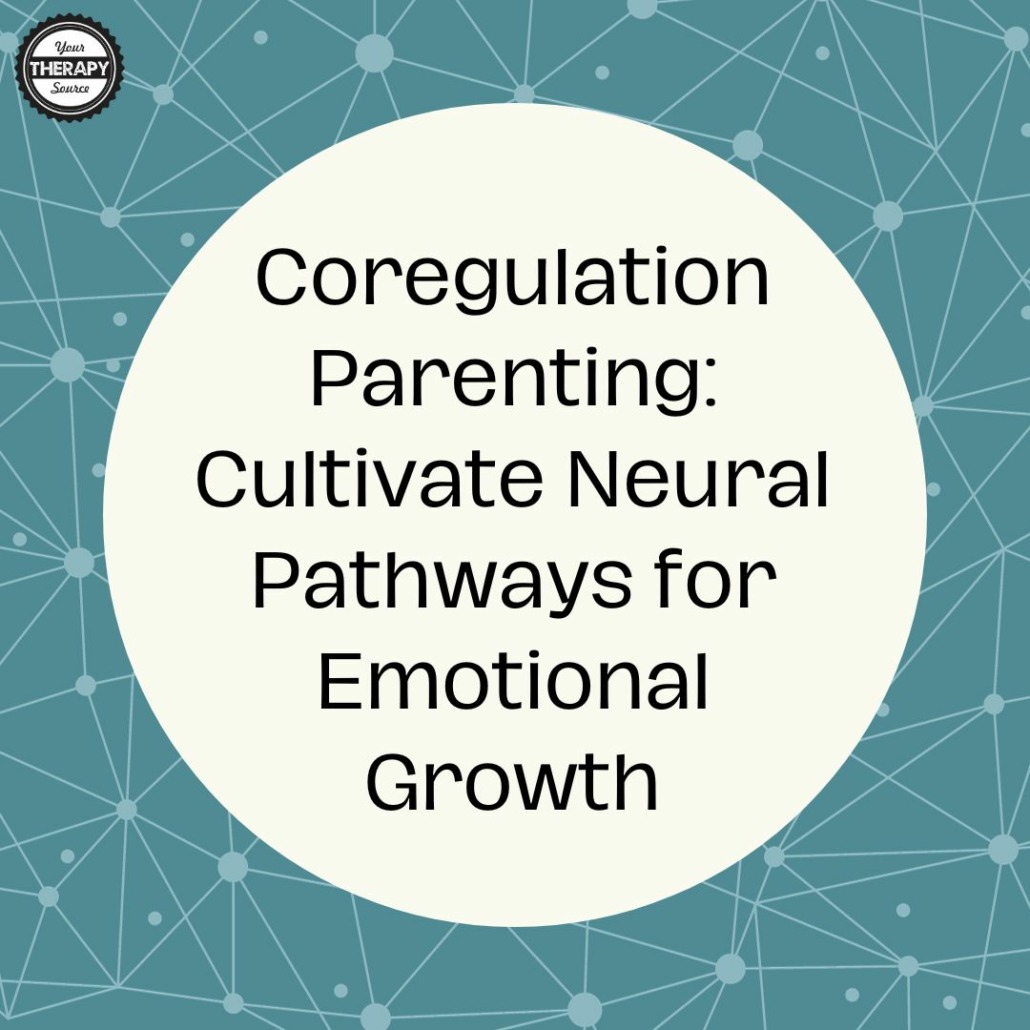
Coregulation parenting is a nuanced approach to nurturing a child’s emotional and neurological development. This method involves a parent engaging with their child in a way that supports the child’s ability to understand, express, and regulate emotions. This interactive process has profound effects on a child’s neurological system, particularly in the development and strengthening of neural pathways responsible for emotional regulation.
Understanding Coregulation Parenting
At the heart of coregulation parenting lies the principle that emotional development is a shared journey between child and caregiver. The term encompasses techniques that primary caregivers use to manage their own emotional state while providing the necessary external support to help their children navigate their own feelings, especially during times of stress or emotional distress. Read more about coregulation here. Take a self-assessment quiz and create a checklist for strategies here.
The Effects on a Child’s Neurological System
Coregulation parenting significantly influences the autonomic nervous system, which governs our heart rate and stress response. By consistently providing a calm presence and emotional support, caregivers can help young children develop a sense of safety that is crucial for a healthy stress response system. Furthermore, this parenting style positively affects the prefrontal cortex, the part of the brain responsible for self-regulation skills, by modeling and reinforcing these skills. Self-regulation skills are critical for home and school functioning.
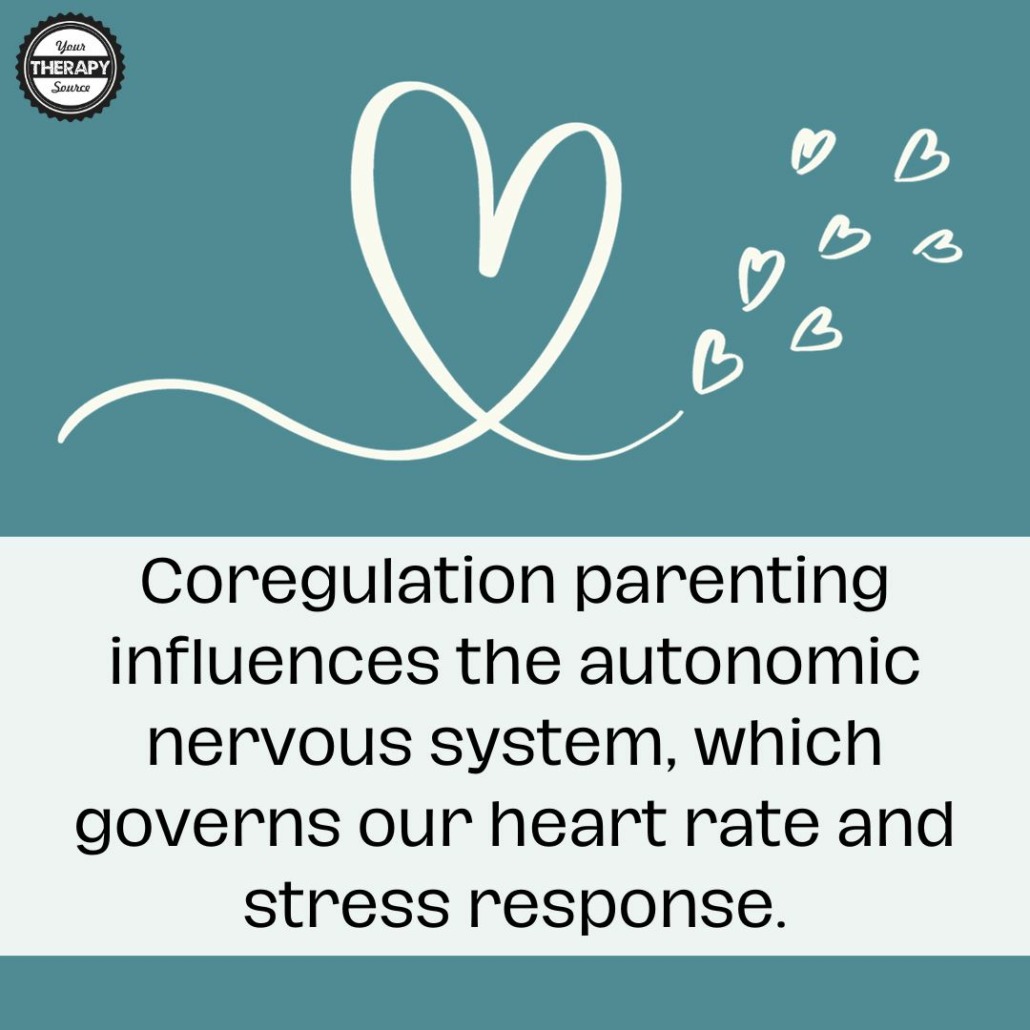
The Role of Coregulation Parenting in Child Development
Coregulation serves as a vital process in the emotional and social development of a child. It is not merely about managing tantrums or soothing upsets; it is fundamentally about teaching children how to understand and handle their emotions, fostering a sense of security, and building the skills necessary for successful interactions with others. The role of coregulation in child development is multifaceted and far-reaching, influencing various aspects of a child’s life.
- Building Emotional Intelligence:Coregulation helps children to recognize and understand their own emotions as well as the feelings of others. By experiencing a caregiver’s responsive and attuned support, children learn to label their emotions, understand their triggers, and anticipate the impact of their emotional responses. This emotional intelligence is crucial for developing empathy and nurturing relationships.
- Developing Self-Regulation Skills:Through coregulation, children gradually learn to regulate their own emotions and behaviors. This transition from external support to self-regulation is a pivotal aspect of growing up. It involves the development of the prefrontal cortex – the part of the brain associated with executive function – which matures throughout childhood and adolescence.
- Forming Secure Attachments:Consistent and sensitive coregulation establishes a pattern of secure attachment between children and their caregivers. Securely attached children are more likely to explore their environment confidently, relate to peers positively, and face new experiences with resilience.
- Navigating Social Interactions:Coregulation strategies provide children with models for appropriate social behavior. When parents reflect back a child’s emotions in a supportive manner, they not only validate those feelings but also teach children how to express themselves in socially acceptable ways.
- Coping with Stress:Coregulation plays a significant role in helping children manage stress. By offering comfort and demonstrating coping mechanisms, caregivers help children develop the tools they need to handle stressful situations independently in the future.
- Promoting Mental Health:The practice of coregulation can have a profound impact on a child’s mental health. By fostering a sense of safety and understanding, coregulation can mitigate the potential for anxiety, depression, and other mental health challenges.
- Enhancing Learning Abilities:When children feel emotionally balanced, they are more likely to focus and engage in learning activities. Coregulation thus contributes to cognitive development by creating an optimal state for learning.
- Encouraging Behavioral Regulation:As children grow, they encounter a variety of behavioral expectations in different settings, such as home, school, and public places. Coregulation helps them to adapt their behaviors accordingly and to self-soothe in the face of challenges.
- Supporting Autonomy and Independence:Over time, effective coregulation strategies empower children to take initiative and act independently. They learn to trust their abilities to manage their emotions and make decisions.
- Facilitating Neurological Development:Coregulation influences neurological development, particularly the maturation of the autonomic nervous system, which plays a key role in emotional and physiological regulation. Positive coregulation experiences can enhance neural pathways that contribute to emotional regulation.
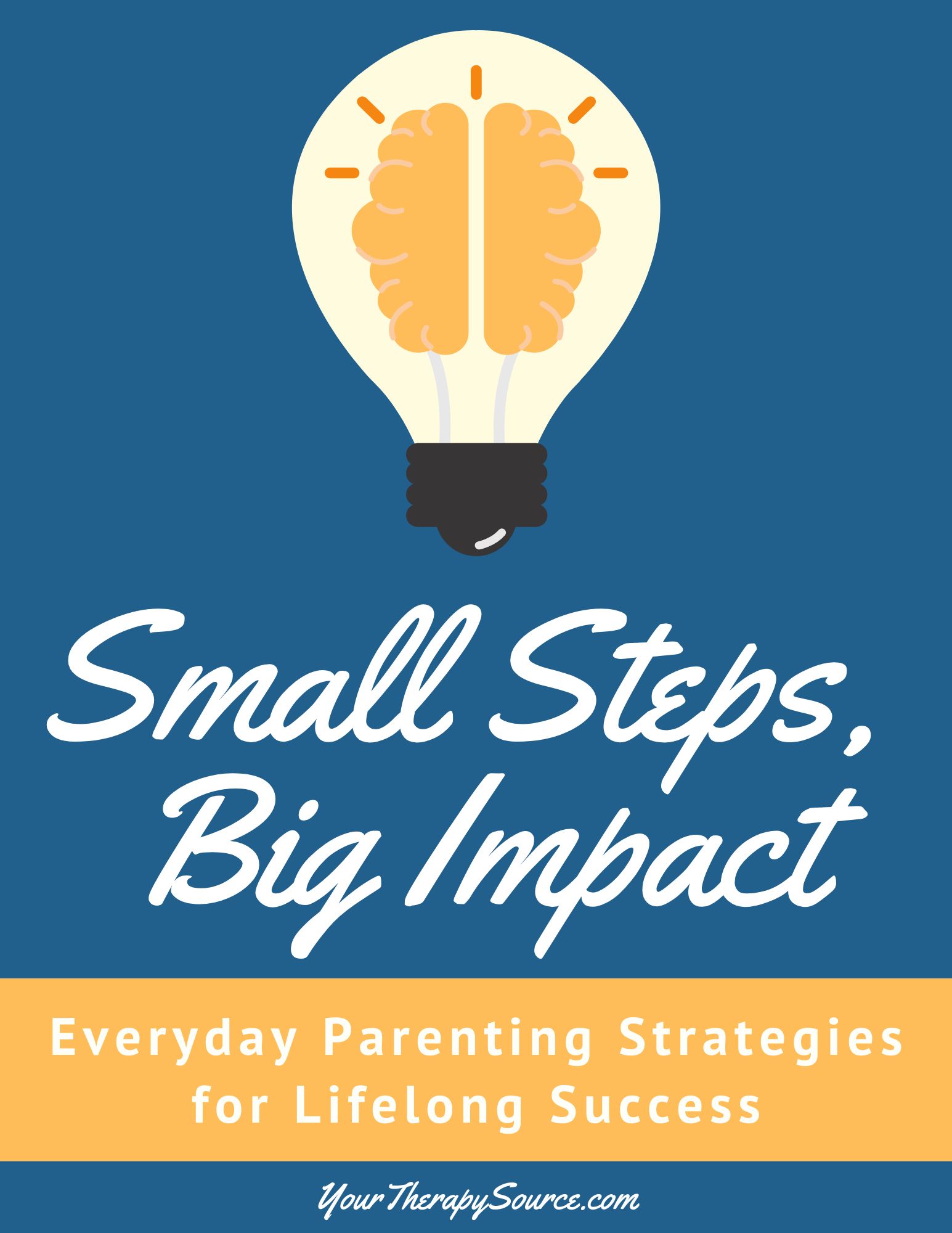
Small Steps, Big Impact: EBook
Strategies and Techniques for Coregulation Parenting
Coregulation parenting is a dynamic and interactive process that requires sensitivity, awareness, and adaptability from caregivers. Here is a comprehensive list of strategies and techniques that parents and primary caregivers can use to effectively practice coregulation with their children:
Observation and Response:
- Pay close attention to the child’s non-verbal cues such as facial expressions and body language to gauge their emotional state.
- Respond to signs of emotional distress with understanding and empathy.
Communication and Connection:
- Use a calm voice to communicate during times of stress, which can help soothe the child’s nervous system.
- Engage in active listening to validate the child’s feelings and experiences.
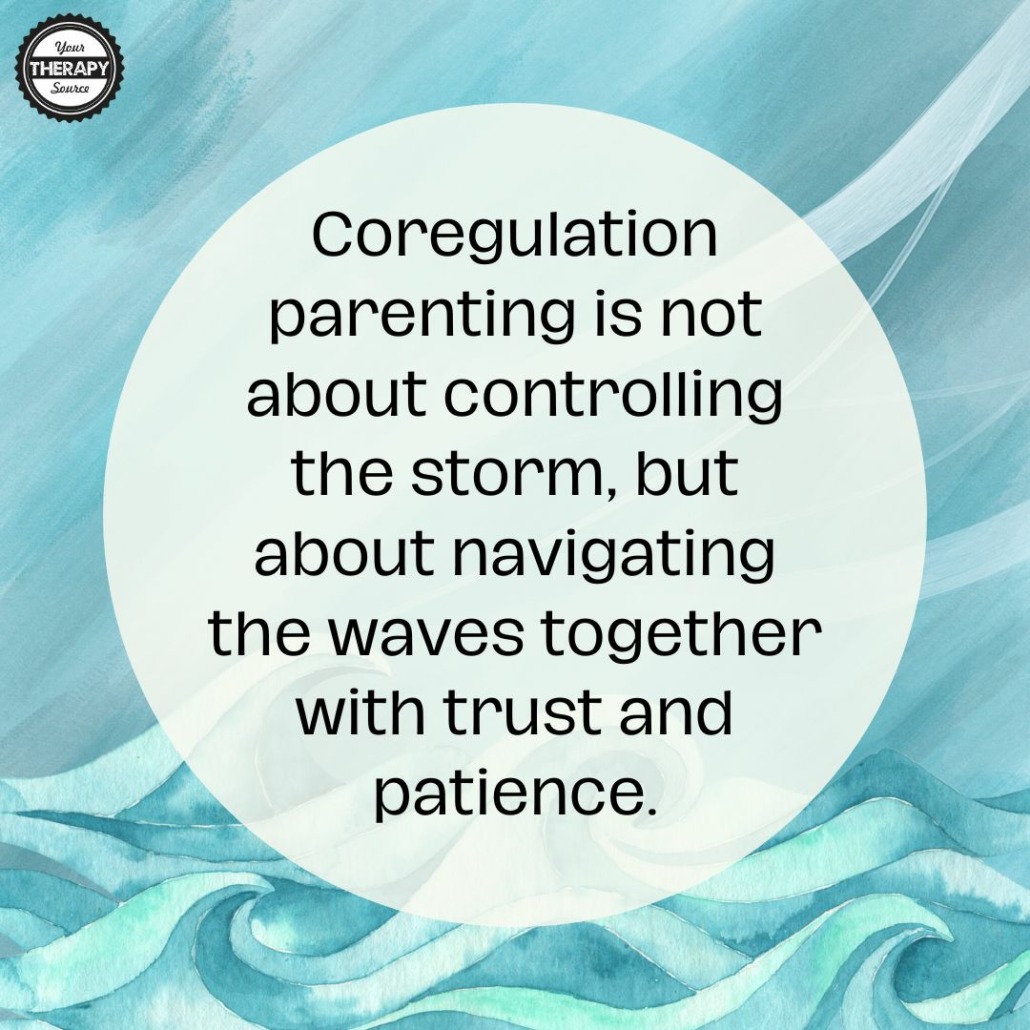
Physical Presence:
- Ensure physical proximity to provide comfort, especially for young children who may feel overwhelmed by their emotions.
- Offer comforting physical touch, like hugs or gentle pats, to help regulate the child’s emotional state.
Modeling Behavior:
- Demonstrate self-regulation through your own behavior; children learn to manage their own emotions by observing how adults manage theirs.
- Practice what you preach – if you tell a child to take deep breaths to calm down, do it with them.
Routine and Structure:
- Establish routines that create a predictable environment, which can be calming for children.
- Incorporate regular moments for relaxation and downtime to prevent overstimulation.
Emotion Coaching:
- Talk about emotions openly and help children put their feelings into words.
- Teach children to identify different emotions and appropriate ways to express them.
Teaching Self-Regulation Skills:
- Encourage children to engage in activities that promote self-regulation, such as mindfulness or yoga.
- Teach and practice calming techniques such as deep breathing or visualization.
Positive Reinforcement:
- Praise children when they successfully use self-regulation skills.
- Create a reward system that motivates children to practice self-regulation.
Coregulation Parenting – Setting Limits and Boundaries:
- Set clear and consistent boundaries that help children understand behavioral expectations.
- Use natural consequences to teach children about the results of their actions.
Coping Strategies:
- Introduce coping strategies for dealing with big emotions, such as taking a break, listening to music, or squeezing a stress ball.
- Discuss and role-play scenarios that might trigger big emotions to prepare children in advance.
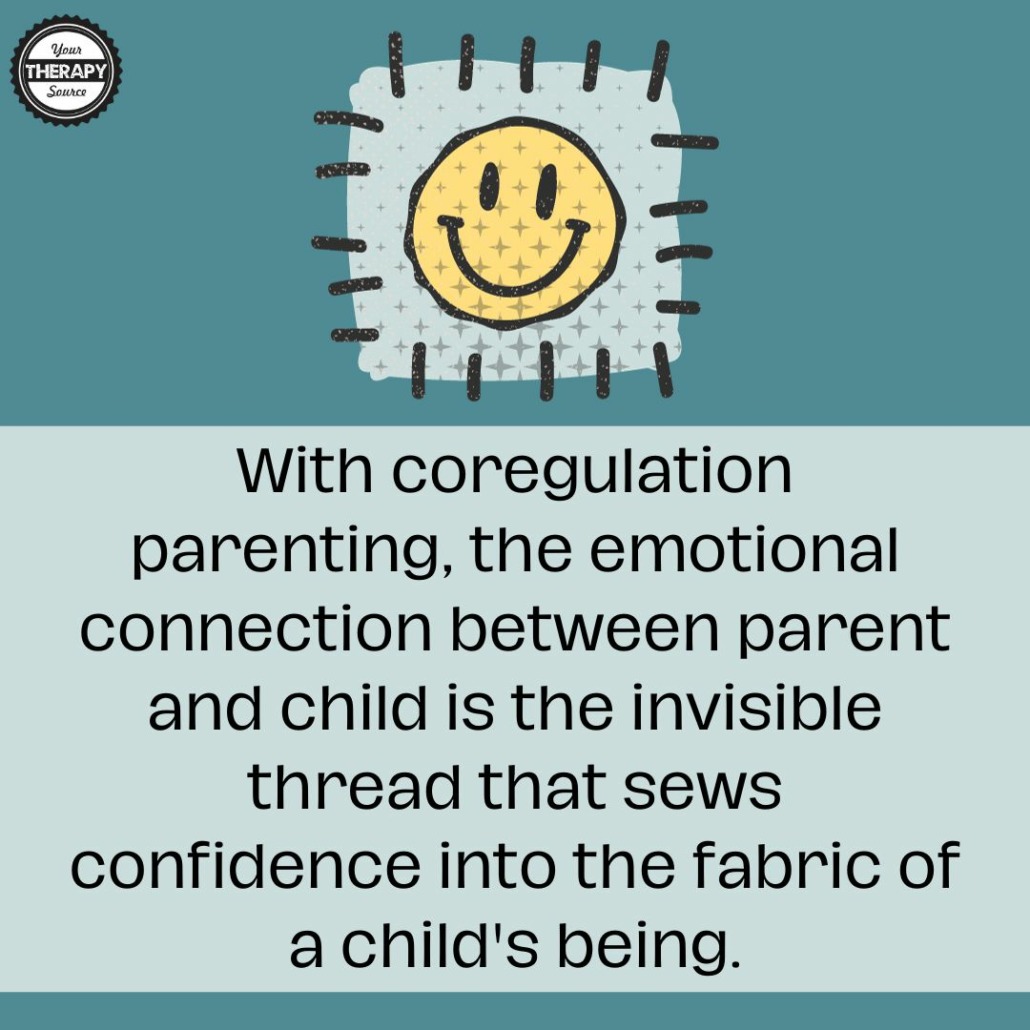
Creating a Supportive Environment:
- Cultivate an emotionally supportive home environment where feelings are respected.
- Provide opportunities for children to discuss their emotions without judgment.
Collaborative Problem-Solving:
- Involve children in finding solutions to emotional challenges, which can empower them and improve their problem-solving skills.
- Foster an atmosphere of teamwork when addressing emotional or behavioral issues.
Educational Activities:
- Use books, games, and other educational tools to teach children about emotions and how to handle them.
- Implement emotion regulation activities tailored to the child’s age and developmental level.
Consistent Caregiving:
- Ensure that all caregivers are on the same page regarding coregulation strategies to provide consistent responses to the child’s emotional needs.
- Communicate with other caregivers about what strategies are effective and any new ones that could be introduced.

Mindfulness for Adults Bundle
Examples of Coregulation Parenting Across Different Stages of Childhood
Coregulation parenting is not a one-size-fits-all approach; it requires customizing these strategies to fit the unique needs of each child and situation. By employing a range of techniques and adapting them as children grow and develop, caregivers can effectively support their children’s journey towards emotional maturity and resilience.
Toddlers:
- Challenge: A toddler may experience a meltdown due to big feelings in a crowded store.
- Coregulation Technique: The parent can hold the toddler close to their body, offering a calming presence and physical proximity that helps regulate the child’s nervous system. Using simple words and a soft tone, the parent can acknowledge the child’s distress and model deep breaths to encourage self-soothing skills.
Preschoolers:
- Challenge: A preschooler might have an emotional outburst when a playdate ends.
- Coregulation Technique: A parent can sit down with the child, making face-to-face interactions to validate their feelings. They might use a stuffed animal to role-play saying goodbye and demonstrate that it’s okay to feel sad, teaching the concept of co-regulation through play.
Coregatulaion Parenting Example – School-Aged Children:
- Challenge: A child might feel overwhelmed by negative emotions after losing a game.
- Coregulation Technique: The parent can engage in positive self-talk with the child, helping them to reframe the situation. They might say, “It’s tough to not win, but you tried your best, and that’s important.” This mutual regulation can reinforce a positive affect and promote a regulated state.
Middle Schoolers:
- Challenge: A middle schooler may experience strong feelings of injustice over a school punishment.
- Coregulation Technique: A parent might encourage the child to express their emotions through journaling or art, offering an external support system to process the emotions. Discussing the situation after some time can help the child understand the behavior of others and develop their own emotion regulation skills.
High Schoolers:
- Challenge: A high schooler could be stressed about college applications.
- Coregulation Technique: The parent can listen attentively, acknowledging the stress and providing a calm voice of reassurance. Encouraging the teenager to take breaks and engage in relaxation activities can help manage their stress response. The parent could also share their own experiences dealing with stressful situations, demonstrating an interactive process for managing emotions.
In each of these situations, parents play the role of the regulated adult, offering a model for emotional co-regulation. By being attentive to the child’s emotional needs and offering appropriate co-regulation support, parents help their children navigate the dynamic systems of their emotions and social interactions. These techniques are not just about managing the current moment of distress; they are crucial steps in the long-term development of a young person’s social-emotional skills and overall emotional health.
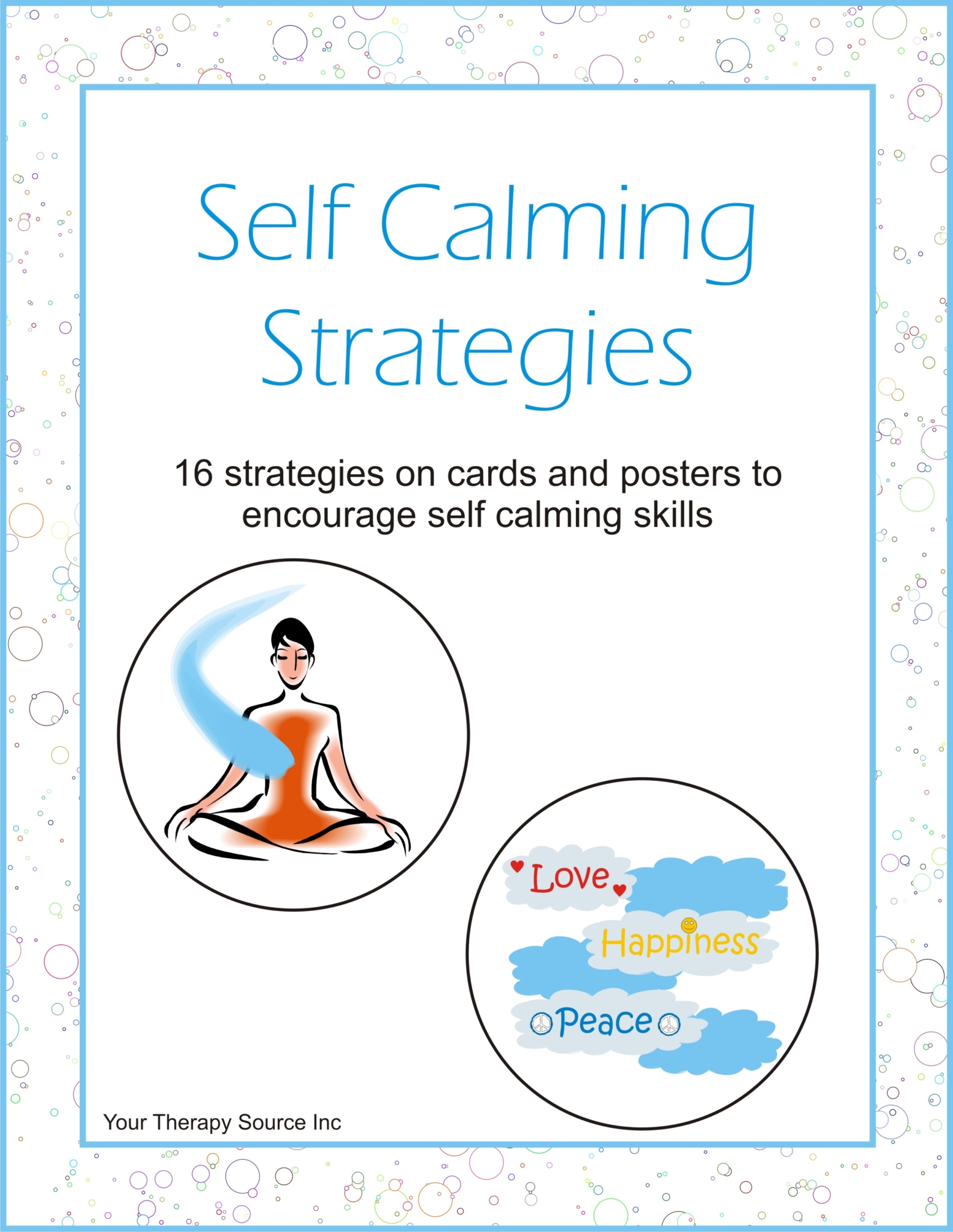
Self Calming Strategies
Key Takeaways about Coregulation Parenting
Coregulation parenting is a transformative approach that shapes a child’s emotional and neurological development through shared emotional journeys and supportive interactions with caregivers. Here are five key actionable takeaways from the concept of coregulation parenting that can empower parents and caregivers in fostering children’s growth towards emotional maturity and resilience.
- Emotion Coaching and Active Listening: Parents should engage in active listening and help children articulate their feelings. This involves talking openly about emotions, validating a child’s experiences, and aiding them in identifying and expressing their emotions appropriately.
- Teaching and Modeling Self-Regulation: Caregivers need to demonstrate self-regulation through their own behaviors and practice calming techniques alongside their children. This could include deep breathing, mindfulness, or yoga, thereby teaching by example.
- Routine and Structure Implementation: Establish consistent routines to create predictability and security, which can soothe children’s nervous systems. Incorporate regular relaxation time to help children learn to manage overstimulation and stress.
- Positive Reinforcement and Consistent Caregiving: Use praise and rewards to reinforce children’s use of self-regulation skills. Ensure all caregivers are unified in their coregulation approach to provide a consistent emotional support system.
- Customized Coregulation Strategies: Adapt coregulation techniques to fit the unique needs of each child and developmental stage, from toddlers to high schoolers. This could range from physical comfort and play-based learning for younger children to collaborative problem-solving and emotional expression activities for older children.
Coregulation parenting is not just a method but a journey that strengthens the bond between caregiver and child, creating a foundation of trust and understanding. By implementing these takeaways, caregivers can promote a nurturing environment that is conducive to the child’s emotional and social competence. This approach paves the way for children to develop into empathetic, self-aware individuals capable of navigating the complexities of their emotions and relationships.


